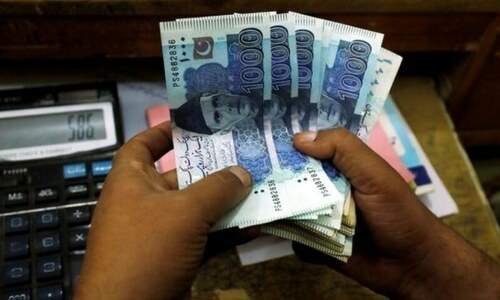ISLAMABAD: In the first four months (July-October) of the current fiscal year, Pakistan’s development expenditure decreased by over 45% to less than Rs99 billion despite growing interest payments and disruptions brought on by severe floods.
The Ministry of Planning and Development’s data shows that overall spending in the first four months of FY23 was Rs98.78 billion, down from Rs178 billion during the same period previous year. Thus, the entire expenditure is significantly below the goal mechanism for development spending at just 12.37 percent of the total PSDP allocation of Rs800 billion.
According to the Planning Division’s announced disbursement mechanism, the development funds allocated in the federal budget are released at a rate of 20% in the first quarter (July-September), followed by 30% in each of the second (October-December) and third quarters (January-March), and the remaining 20% in the final quarter (April-June) of a fiscal year.
Given delays in interest payments and a slowdown in revenue, the government has chosen to limit development spending in the first half of the fiscal year (July-December) to less than 20% instead of 50% as a temporary measure to maintain engagement with the International Monetary Fund (IMF).
Due to increased interest payments of roughly Rs 900 billion and revenue shortfalls of less than Rs 100 billion that could need to be made up by further tax measures next month, the government now projects that overall spending will exceed budget targets by about Rs 1 trillion.
Tragically, even development spending increased to Rs98.78 billion, primarily due to a more than 45 percent increase in spending by state-run corporations, including the National Highway Authority (NHA) and entities in the power sector, in the first four months of the current year compared to Rs31 billion during the same period last year.
More significantly, state-run enterprises used development money more efficiently than before, largely due to a more than 245 percent increase in electricity sector projects, which went from costing Rs7 billion in the first four months of last year to costing Rs24.4 billion this year.
On the other hand, NHA’s expenses somewhat decreased to Rs20 billion this year from Rs24 billion previous year. Without accounting for companies, the development spending by the federal ministries, divisions, and attached agencies was Rs54 billion in the first four months of this year compared to Rs147 billion in the same period last year, a decrease of more than 63 percent.
The planning ministry has stopped routinely publishing PSDP authorizations and expenditures since the beginning of the current fiscal year, mostly due to low utilisation, and has now for the first time presented a consolidated stance on spending.
Over the years, the Planning Division has provided weekly updates on the authorised funds for PSDP; however, this year, the practise has been abandoned, and the data from previous year has also been removed from the website archives. The population’s living standards are directly impacted by the underuse of public funding for development, which has negative social and developmental effects.
According to the ministry, a maximum of 41 percent, or Rs98.7 billion, may be spent out of the approximately Rs241 billion that had been authorised for use under the regulations and disbursement process. Only 29 percent of the allocated Rs184 billion for the first four months were spent on development activities outside of companies, which totaled Rs54 billion.
Due to continuing significant development initiatives, the water resources division outperformed all others in terms of using funds this year, using Rs19 billion instead of the Rs21.4 billion that was authorised. In contrast to the Rs 58 billion in permitted spending, the water industry used Rs 18 billion in just four months of last year.



Comments are closed.